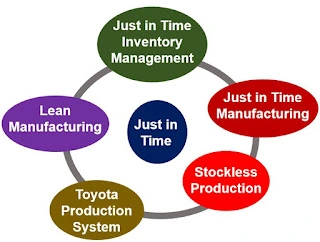Just in Time (JIT) in Garment Manufacturing: Goals And Objectives of JIT
What is Just in Time (JIT)?
Just-in-time is a Japanese manufacturing management method developed in the 1970s. It was first adopted by Toyota manufacturing plants by Taiichi Ohno. The main concern at that time was to meet consumer demands. Because of the success of JIT management, Taiichi Ohno was named the Father of JIT. The just-in-time manufacturing system is considered a pull system. The principle of Just in Time (JIT) is to eliminate sources of manufacturing waste by getting the right quantity of raw materials and producing the right amount of products in the right place at the right time. In this article, we discuss Just in Time (JIT) in Garment Manufacturing and the Goals And Objectives of JIT.
The Goals of JIT
The ultimate goal of JIT is a balanced, smooth, and rapid flow of materials through the system. This can be achieved by approaching the following supporting purposes first;
1. Zero defects.
2. Zero inventories.
3. Zero set–up time.
4. Zero handling.
5. Zero breakdown.
Objectives of JIT
The objectives of JIT can be mentioned as shown:
1. Produce with perfect quality.
2. Produce with minimum lead time.
3. Produce products with only those features the customer wants.
4. Produce with no waste of labor, material, or equipment; every movement must have a purpose so that there is zero idle inventory.
5. Produce with methods that allow for the development of people.

Just-In-Time (JIT) in Garments Manufacturing: Revolutionizing Efficiency and Quality
1. Streamlined Production Processes:
JIT focuses on reducing inventory and maintaining minimal stock levels. In garment manufacturing, this means having the suitable materials and components arrive precisely when they’re needed for production. By eliminating excess inventory, manufacturers can free up space, reduce holding costs, and minimize the risk of wastage due to obsolescence.
2. Enhanced Efficiency and Cost Reduction:
Through JIT, garment manufacturers can optimize their processes, resulting in smoother workflows. It allows for more efficient use of resources, reduced lead times, and minimized setup times for equipment. This leads to cost savings as it reduces idle time and allows for a more agile response to changing market demands.
3. Quality Improvement:
JIT emphasizes quality control at every stage of production. By receiving materials exactly when needed, manufacturers can ensure the quality of inputs and address issues promptly. This stringent control minimizes defects and rework, leading to higher-quality end products and increased customer satisfaction.
4. Flexibility and Adaptability:
Implementing JIT in garment manufacturing enhances the ability to respond swiftly to changes in consumer demands and market trends. This adaptability allows manufacturers to adjust production schedules, change product designs, and meet custom orders more efficiently, maintaining a competitive edge in the market.
5. Collaborative Supplier Relationships:
JIT fosters strong relationships between manufacturers and suppliers. Close collaboration ensures that suppliers understand the specific needs and timelines of the manufacturer, leading to smoother material flow and timely deliveries. This relationship is built on trust and reliability, crucial elements in JIT implementation.
However, while the benefits of JIT in garment manufacturing are evident, there are challenges to its successful implementation. Dependency on timely deliveries from suppliers, potential disruptions in the supply chain, and the need for meticulous planning and coordination are among the hurdles that companies might face.
Conclusion
Just in Time (JIT) in Garment Manufacturing makes the process very effective. Moreover, JIT’s reliance on lean inventory levels leaves little room for error. Any disruption in supply or unexpected demand fluctuations can significantly impact production schedules and customer fulfillment.
